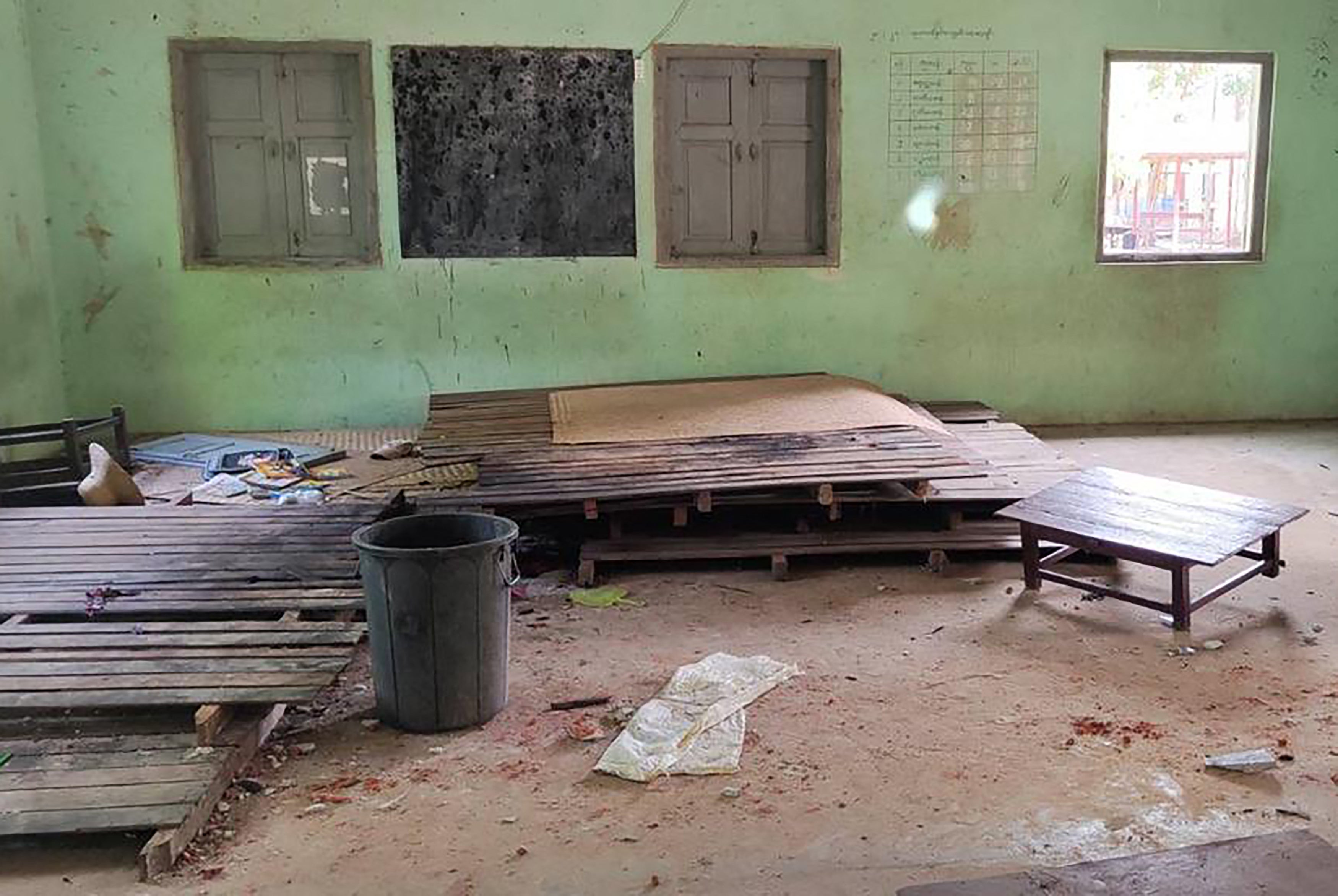Myanmar’s junta denies deadliest attack on school after 13 found dead
While military acknowledges fighting in the region, it blames government’s armed opposition for deaths

Your support helps us to tell the story
From reproductive rights to climate change to Big Tech, The Independent is on the ground when the story is developing. Whether it's investigating the financials of Elon Musk's pro-Trump PAC or producing our latest documentary, 'The A Word', which shines a light on the American women fighting for reproductive rights, we know how important it is to parse out the facts from the messaging.
At such a critical moment in US history, we need reporters on the ground. Your donation allows us to keep sending journalists to speak to both sides of the story.
The Independent is trusted by Americans across the entire political spectrum. And unlike many other quality news outlets, we choose not to lock Americans out of our reporting and analysis with paywalls. We believe quality journalism should be available to everyone, paid for by those who can afford it.
Your support makes all the difference.Myanmar’s military-ruled government denied carrying out attacks on a school and village in the country’s north-central region that reportedly killed 13 civilians.
The statement came even as the UN’s agency for children claimed 11 children had died in an air strike on Let Yet Kone village in Myanmar’s Tabayin township on 16 September.
“On 16 September, at least 11 children died in an air strike and indiscriminate fire in civilian areas, including a school in Tabayin Township, Sagaing Region of Myanmar,” said Unicef.
Offering condolences to the affected families, it said that “at least 15 children from the same school are still missing”.
The international group called for their “immediate and safe release” while asserting that “children must never be attacked”.
The fatality figures from Unicef are, however, disputed as latest media reports have claimed seven children and six adults were killed when army helicopters shot up a school because of the ruling junta’s assertion that rebels were using the building to attack its forces.
Earlier on Tuesday, UN chief António Guterres also condemned the strike, according to his office, which also claimed that 13 people died, including 11 students.
Major General Zaw Min Tun, spokesperson for the ruling military council, acknowledged fighting in Tabayin but blamed the government’s armed opponents – People’s Defense Force and their allies from the Kachin Independence Army, an ethnic rebel group – for the casualties.
According to an eyewitness account, two helicopters fired machine guns and heavier weapons at a school in a Buddhist monastery in the village attended by 240 children from kindergarten to the eighth standard.
After an hour of continuous shooting, about 80 soldiers charged into the monastery grounds, firing their weapons, a school administrator told the Associated Press. About 30 children were wounded and 20 taken way by soldiers along with three teachers, said the administrator.
The number of children killed in the airstrikes is reported to be the highest since the military seized power in Myanmar last February, ousting the elected government of Aung San Suu Kyi.
While the army’s takeover triggered a nationwide protest, with the military using deadly force, fighting has been especially fierce in Sagaing.
The military launched several offensives in the area, in some cases burning down villages and displacing more than half a million people.
Speaking to journalists on Tuesday, Major General Min Tun said violence in the village occurred when the soldiers went to verify information that rebels were present there.
“They forced the people to stay under the main building of the monastery. And then they started to fire on the security forces while using the villagers as human shields. The army shot back at them,” he said.
Claiming the army rescued people at the monastery after rebels escaped, he said the soldiers found two seriously injured children in the school and immediately took them to a military hospital.
Other wounded villagers were taken to nearby hospitals, he added.
But the account of the incident was challenged by the school administrator who said “no one forced” anyone into the monastery and “there was no armed group in the village”.
“What Zaw Min Tun said at the press conference were words opposite to the truth.”
Additional reporting from the wires





Join our commenting forum
Join thought-provoking conversations, follow other Independent readers and see their replies
Comments